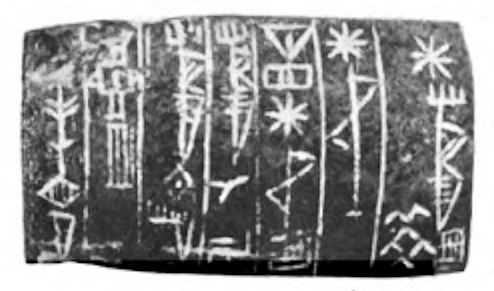|
Silili
Silili is a divine figure mentioned in Tablet VI of the Epic of Gilgamesh. Gilgamesh objects to the unwanted attractions of the goddess Ishtar, enumerating the previous lovers of Ishtar, and the misfortunes which befell them. He claims that Ishtar once loved the horse, but ultimately decreed a number of misfortunes for him, including the continuous wailing of "his mother, Silili". Because Silili is only mentioned in passing, there is little to say of her character, other than she is a female divine figure closely associated with the horse. Silili is named in Tablet VI, line 57 as "his mother, goddess Silili ("AMA-šú dSi-li-li). See also * List of horses in mythology and folklore This is a list of horses in mythology and folklore. Fictive horses of historical figures or horses with fictive history added by romancers may be cross-listed under List of historical horses. British *Arondel, Bevis's horse in the Middle English ... References * Glossary, Appendices, Appendix (Cha ... [...More Info...] [...Related Items...] OR: [Wikipedia] [Google] [Baidu] |
Mesopotamian Goddesses
Deities in ancient Mesopotamia were almost exclusively Anthropomorphism, anthropomorphic. They were thought to possess extraordinary powers and were often envisioned as being of tremendous physical size. The deities typically wore ''melam'', an ambiguous substance which "covered them in terrifying splendor" and which could also be worn by heroes, kings, giants, and even demons. The effect that seeing a deity's ''melam'' has on a human is described as ''ni'', a word for the "Paresthesia, physical creeping of the flesh". Both the Sumerian language, Sumerian and Akkadian languages contain many words to express the sensation of ''ni'', including the word ''puluhtu'', meaning "fear". Deities were almost always depicted wearing horned caps, consisting of up to seven superimposed pairs of ox-horns. They were also sometimes depicted wearing clothes with elaborate decorative gold and silver ornaments sewn into them. The ancient Mesopotamians believed that their deities lived in Heaven, ... [...More Info...] [...Related Items...] OR: [Wikipedia] [Google] [Baidu] |
List Of Horses In Mythology And Folklore
This is a list of horses in mythology and folklore. Fictive horses of historical figures or horses with fictive history added by romancers may be cross-listed under List of historical horses. British *Arondel, Bevis's horse in the Middle English romance '' Bevis of Hampton'' *Arondiel, ridden by Fergus of Galloway, later he rides Flori In the Middle Dutch '' Ferguut'' the horse is Pennevare. *Swallow, mare of Hereward the Wake Arthurian *Assile, Assyle, horse of Arthur of Little Britain (Brittany), in * Aubagu, horse of Arthur in ''Erec''. * Bel Joeor, Beau Joueur, Tristan's horse in Béroul's ''Tristan''. Cf. Passe-Brewel * Gringolet, Sir Gawain's horse. Gwalchmai's horse is Keincaled in the Welsh Triads * Hengroen, King Arthur's horse in ''Culhwch ac Olwen'' * Llamrei, King Arthur's mare in ''Culhwch ac Olwen'' *Lorigal, horse born after Eliavrés the magician was forced to mate with a mare in the First Perceval Continuation (Livre de Caradoc). * Passe-Brewel (Malory), hors ... [...More Info...] [...Related Items...] OR: [Wikipedia] [Google] [Baidu] |
Epic Of Gilgamesh
The ''Epic of Gilgamesh'' () is an epic poetry, epic from ancient Mesopotamia. The literary history of Gilgamesh begins with five Sumerian language, Sumerian poems about Gilgamesh (formerly read as Sumerian "Bilgames"), king of Uruk, some of which may date back to the Third Dynasty of Ur (). These independent stories were later used as source material for a combined epic in Akkadian language, Akkadian. The first surviving version of this combined epic, known as the "Old Babylonian" version, dates back to the 18th century BCE and is titled after its incipit, ''Shūtur eli sharrī'' ("Surpassing All Other Kings"). Only a few clay tablet, tablets of it have survived. The later Standard Babylonian version compiled by Sîn-lēqi-unninni dates to somewhere between the 13th to the 10th centuries BCE and bears the incipit ''Sha naqba īmuru'' ("He who Saw the Deep(s)", ). Approximately two-thirds of this longer, twelve-tablet version have been recovered. Some of the best copies were d ... [...More Info...] [...Related Items...] OR: [Wikipedia] [Google] [Baidu] |
Ishtar
Inanna is the List of Mesopotamian deities, ancient Mesopotamian goddess of war, love, and fertility. She is also associated with political power, divine law, sensuality, and procreation. Originally worshipped in Sumer, she was known by the Akkadian Empire, Akkadians, Babylonian religion, Babylonians, and Assyrians as Ishtar. Her primary title is Queen of Heaven (antiquity), "the Queen of Heaven". She was the patron goddess of the Eanna temple at the city of Uruk, her early main religious center. In archaic Uruk, she was worshipped in three forms: morning Inanna (Inana-UD/hud), evening Inanna (Inanna sig), and princely Inanna (Inanna NUN), the former two reflecting the phases of her associated planet Venus. Her most prominent symbols include the Lion of Babylon, lion and the Star of Ishtar, eight-pointed star. Her husband is the god Dumuzid (later known as Tammuz), and her (attendant) is the goddess Ninshubur, later conflated with the male deities Ilabrat and Papsukkal. Inanna ... [...More Info...] [...Related Items...] OR: [Wikipedia] [Google] [Baidu] |

